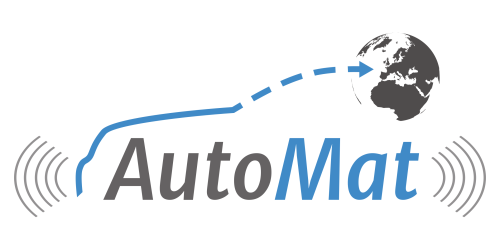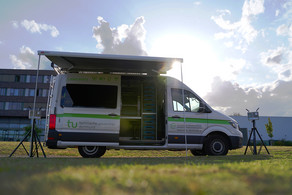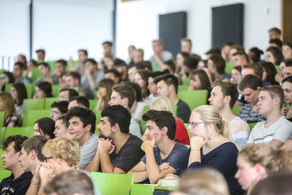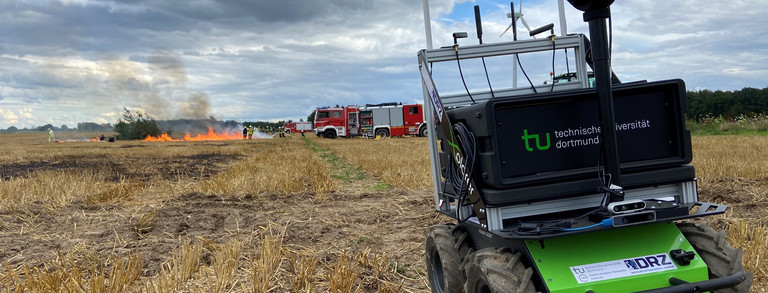AutoMat
The core intention of the AutoMat project is to establish a novel and open ecosystem in the form of a cross-border Vehicle Big Data Marketplace that leverages currently unused information gathered from a large amount of vehicles from various brands. The interface to the marketplace is derived from a brand-independent Common Vehicle Information Model (CVIM) that makes aggregated vehicle data accessible to cross-sectorial service providers. AutoMat intends to reduce the costs for realizing and providing services based on vehicle data.
Project duration: 01.04.2015 - 31.08.2018

The core intention of the AutoMat project is to establish a novel and open ecosystem in the form of a cross-border Vehicle Big Data Marketplace that leverages currently unused information gathered from a large amount of vehicles from various brands. The interface to the marketplace is derived from a brand-independent Common Vehicle Information Model (CVIM) that makes aggregated vehicle data accessible to cross-sectorial service providers. AutoMat intends to reduce the costs for realizing and providing services based on vehicle data, by achieving the following:
- Creation of an open ecosystem for provisioning of manufacturer and service provider independent vehicle data
- Single point of data access for service providers via the Marketplace
- Definition of standardized and open interfaces for unconstrained data access
- Specification of the Common Vehicle Information Model (CVIM) data format that enables harmonized, generic vehicle data access
- Provision of a broad spectrum of collected data due to different participating OEMs
- Definition and prototyping of Vehicle Big Data Marketplace concept as mediator between vehicle data and cross-sectorial service providers
- Validation of the AutoMat concept by developing cross-sectorial (non-automotive) example services, e.g.: Meteorological Data based Hyper Local Services and Extended Innovative Enterprise Services
- Development, definition and validation of a market business model and its value chain as well as stimulating the market participation by an open call for services and application
Further information:
News
Publications
Exploiting Map Topology Knowledge for Context-predictive Multi-interface Car-to-cloud Communication
B. Sliwa, J. Pillmann, M. Klaß, C. Wietfeld,
In 2018 IEEE 88th IEEE Vehicular Technology Conference (VTC-Fall), Chicago, USA, August 2018.
Efficient and Reliable Car-to-Cloud Data Transfer Empowered by BBR-enabled Network Coding
J. Pillmann, D. Behnke, B. Sliwa, M. Priebe, C. Wietfeld,
In 2018 IEEE 88th IEEE Vehicular Technology Conference (VTC-Fall), Chicago, USA, August…
Resource-efficient Transmission of Vehicular Sensor Data Using Context-aware Communication
B. Sliwa, T. Liebig, R. Falkenberg, J. Pillmann, C. Wietfeld,
In 19th IEEE International Conference on Mobile Data Management, Aalborg, Denmark,…
The AutoMat CVIM - A scalable data model for automotive big data marketplaces
J. Pillmann, B. Sliwa, C. Wietfeld,
In 19th IEEE International Conference on Mobile Data Management (MDM), Aalborg, Denmark, June 2018.
tinyLTE: Lightweight, Ad Hoc Deployable Cellular Network for Vehicular Communication
F. Eckermann, P. Gorczak, C. Wietfeld,
In IEEE Vehicular Technology Conference (VTC-Spring), June 2018.
Efficient Machine-type Communication using Multi-metric Context-awareness for Cars used as Mobile Sensors in Upcoming 5G Networks
B. Sliwa, T. Liebig, R. Falkenberg, J. Pillmann, C. Wietfeld,
In IEEE Vehicular Technology Conference (VTC-Spring), Porto, Portugal, June 2018.
Empirical Evaluation of Predictive Channel-Aware Transmission for Resource Efficient Car-To-Cloud Communication
J. Pillmann, B. Sliwa, C. Kastin, C. Wietfeld,
In IEEE Vehicular Networking Conference (VNC), Torino, Italy, November 2017.
ScalaNC - Scalable heterogeneous link aggregation enabled by Network Coding
D. Behnke, et al.,
In 13th IEEE International Conference on Wireless and Mobile Computing, Networking and Communications (WiMob 2017), October 2017.
Novel Common Vehicle Information Model (CVIM) for Future Automotive Vehicle Big Data Marketplaces
J. Pillmann, C. Wietfeld, A. Zarcula, T. Raugust, D. C. Alonso,
In IEEE Intelligent Vehicles Symposium., June 2017.





